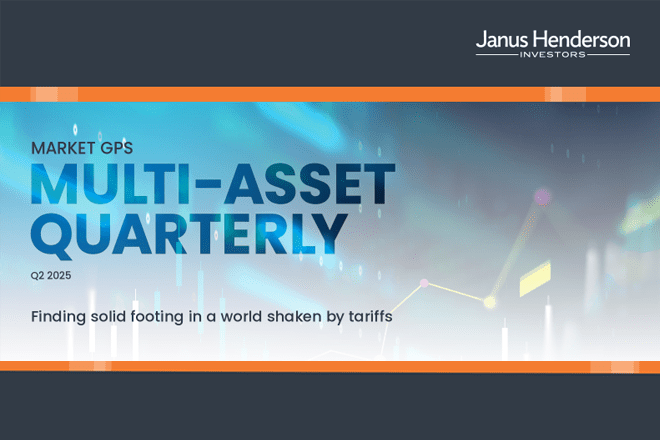Multi Asset Quarterly Q2 2025: Finding solid footing in a world shaken by tariffs
What do current market dynamics mean for asset allocation? The Market GPS Multi-Asset Quarterly highlights key drivers and positioning.

4 minute read
Key takeaways:
- Ongoing trade disputes raise concerns about the sustainability of the extended economic cycle and that negative sentiment among businesses and consumers could start to be reflected in economic data.
- Tariffs are complicating the US Federal Reserve’s efforts to control inflation, with the effectiveness of its strategies being hindered, making it difficult to predict and stabilise economic growth.
- The initial negative reaction of the markets to the tariff threats, which could lead to a period of global stagflation, might also create a unique investment environment that could present investors with significantly undervalued assets.
The Janus Henderson Multi-Asset Team applies a “partnership and transparency” approach, providing access to differentiated insights, disciplined investments, and world-class service. This quarterly update shares the team’s views on market dynamics as well as the dashboard that informs their positioning across Janus Henderson’s range of multi-asset models and portfolios.
DownloadIMPORTANT INFORMATION
Equity securities are subject to risks including market risk. Returns will fluctuate in response to issuer, political and economic developments.
Fixed income securities are subject to interest rate, inflation, credit and default risk. As interest rates rise, bond prices usually fall, and vice versa. High-yield bonds, or “junk” bonds, involve a greater risk of default and price volatility.
Smaller capitalization securities may be less stable and more susceptible to adverse developments, and may be more volatile and less liquid than larger capitalization securities.
Sovereign debt securities are subject to the additional risk that, under some political, diplomatic, social or economic circumstances, some developing countries that issue lower quality debt securities may be unable or unwilling to make principal or interest payments as they come due.


